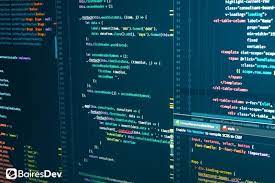The Art and Science of Programming
Programming is a fascinating blend of artistry and logic, where creativity meets precision to create functional solutions in the digital world. It is both a craft and a science, requiring a unique combination of skills and mindset.
The Creative Side
At its core, programming involves problem-solving through code. Programmers are like artists painting on a canvas, except their canvas is lines of code that bring ideas to life. They have the creative freedom to design and build software applications from scratch, turning concepts into reality.
The Logical Aspect
On the other hand, programming is deeply rooted in logic and structure. Every line of code must follow strict rules and syntax to ensure that the program functions correctly. Programmers need to think analytically, breaking down complex problems into manageable components and devising efficient algorithms to solve them.
The Intersection
What makes programming truly captivating is the intersection of creativity and logic. Programmers not only write code but also architect systems, foreseeing how different components will interact and anticipating potential challenges. This requires both imaginative thinking and meticulous attention to detail.
Continuous Learning
Programming is an ever-evolving field, with new languages, frameworks, and technologies constantly emerging. As such, programmers must be lifelong learners, staying up-to-date with industry trends and honing their skills through practice and experimentation.
In Conclusion
Programming is more than just writing lines of code; it’s a dynamic blend of artistry and science that empowers us to innovate, automate tasks, and build the digital world around us. Whether you’re a seasoned developer or just starting your coding journey, embrace the creativity and logic that define this exciting discipline.
Understanding Programming: Key Questions and Answers
- What is the study of programming?
- What is programming vs. coding?
- What is programming used?
- What is coding and programming?
- What are the 4 types of programming?
- What do you mean programming?
- How can I learn a programming?
What is the study of programming?
The study of programming delves into the intricate world of designing, writing, testing, and maintaining code that instructs computers to perform specific tasks. It encompasses learning various programming languages, understanding algorithms and data structures, and mastering problem-solving techniques to create efficient and functional software applications. Through the study of programming, individuals gain the ability to translate their ideas into executable code, empowering them to innovate, automate processes, and contribute to the ever-evolving digital landscape.
What is programming vs. coding?
In the realm of software development, the distinction between programming and coding is a common point of confusion for many. Programming encompasses the broader process of designing and developing software applications, focusing on problem-solving, algorithm creation, and system architecture. On the other hand, coding refers to the specific act of translating algorithms and logic into a programming language through writing lines of code. While programming involves strategic planning and conceptualisation, coding is more about implementing those plans in a syntactically correct manner. Understanding this nuanced difference is key to appreciating the multifaceted nature of software development and the roles that programming and coding play within it.
What is programming used?
Programming is a versatile tool used across various industries and disciplines to create software applications, websites, mobile apps, and more. It serves as the backbone of technological advancements, enabling automation, data analysis, artificial intelligence, and countless other innovations. From simplifying everyday tasks to powering complex systems, programming plays a pivotal role in shaping the digital landscape and driving progress in our interconnected world.
What is coding and programming?
Coding and programming are often used interchangeably, but they have distinct meanings in the world of technology. Coding refers to the act of writing lines of instructions in a specific programming language to create software applications, websites, or other digital solutions. On the other hand, programming encompasses a broader process that involves not only writing code but also designing algorithms, problem-solving, and testing to ensure that the final product functions as intended. In essence, coding is a fundamental aspect of programming, serving as the practical implementation of a programmer’s logic and creativity to bring ideas to life in the digital realm.
What are the 4 types of programming?
In the realm of programming, one frequently asked question revolves around the classification of programming into four main types. These types include procedural programming, object-oriented programming, functional programming, and event-driven programming. Each type offers a distinct approach to solving problems and organising code, catering to different needs and preferences of developers. Understanding these four types provides programmers with a broader perspective on how to structure their code effectively and choose the most suitable paradigm for a given project.
What do you mean programming?
Programming, in the context of computer science and software development, refers to the process of creating instructions that a computer can execute to perform specific tasks or functions. It involves writing code using programming languages to design and build software applications, websites, algorithms, and more. Programming requires logical thinking, problem-solving skills, and attention to detail to ensure that the code functions correctly and efficiently. Essentially, programming is the backbone of technology, enabling us to harness the power of computers to automate processes, solve problems, and innovate in a digital world.
How can I learn a programming?
Learning programming is a rewarding journey that requires dedication, practice, and a curious mindset. To start learning programming, it’s essential to choose a programming language that aligns with your goals and interests. There are numerous resources available online, such as tutorials, courses, and coding platforms, that cater to beginners and seasoned programmers alike. It’s beneficial to start with the basics, understanding fundamental concepts like variables, loops, and functions before progressing to more advanced topics. Additionally, actively engaging in coding challenges, projects, and seeking mentorship can accelerate your learning process and enhance your problem-solving skills. Remember that learning programming is a continuous process of exploration and growth, so stay persistent and embrace the challenges along the way.

